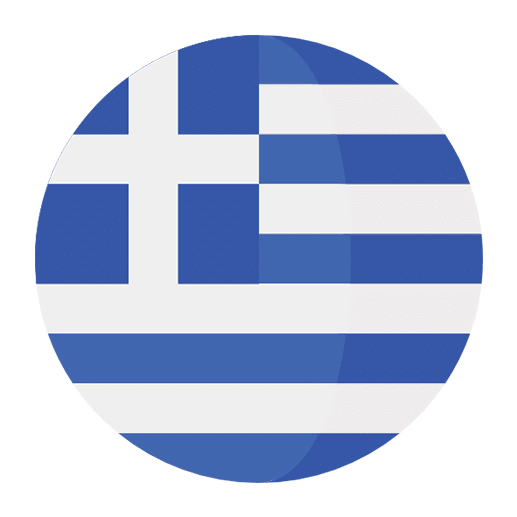Learning a new language can be both an exciting and daunting journey. Greek, with its rich history and linguistic heritage, offers a treasure trove of words that often carry nuanced meanings. One fascinating pair of words that often intrigues language learners is “κύμα” (kýma) and “κύμαρ” (kymar). Both words relate to natural phenomena, but they convey distinct images and concepts. Understanding the difference between these two words will not only enrich your Greek vocabulary but also deepen your appreciation for the subtleties of the language.
Understanding “Κύμα” (kýma)
The word “κύμα” is commonly used in Modern Greek and translates to “wave” in English. It is a term that describes the undulating movement of water in seas, lakes, and rivers. Waves are a fundamental part of our interaction with large bodies of water, whether you’re surfing, sailing, or simply watching the ocean.
Physical Waves: In a physical sense, “κύμα” refers to the oscillating motion that travels through water. For example, you might say:
– “Τα κύματα της θάλασσας είναι μεγάλα σήμερα.” (The waves of the sea are big today.)
– “Το κύμα έσπασε στην ακτή.” (The wave broke on the shore.)
Metaphorical Uses: Beyond its literal meaning, “κύμα” can also be used metaphorically in various contexts. For instance:
– “Ένα κύμα ενθουσιασμού διαπέρασε το πλήθος.” (A wave of excitement swept through the crowd.)
– “Αντιμετωπίζουμε ένα νέο κύμα πανδημίας.” (We are facing a new wave of the pandemic.)
Etymology and Evolution
The word “κύμα” has its roots in ancient Greek, derived from the verb “κυέω” (kyéō), which means to swell or to be pregnant. This etymology makes sense when you consider the swelling and ebbing nature of waves. Over time, the word has maintained its relevance and continues to be a staple in the Modern Greek lexicon.
Delving into “Κύμαρ” (kymar)
While “κύμα” is relatively well-known, “κύμαρ” is a term that is less frequently encountered and is more specialized. “Κύμαρ” translates to “ridge” in English. This term is used to describe a long, narrow elevated strip of land or a raised geological formation.
Geological Formations: In a geological context, “κύμαρ” refers to ridges formed by tectonic forces, erosion, or sediment deposition. Examples include:
– “Το κύμαρ της οροσειράς διασχίζει την πεδιάδα.” (The ridge of the mountain range crosses the plain.)
– “Οι γεωλόγοι μελετούν το κύμαρ για να κατανοήσουν την ιστορία της γης.” (Geologists study the ridge to understand the history of the earth.)
Architectural and Structural Uses: The term can also be applied in architecture and construction to describe raised features or structures:
– “Το σπίτι είχε ένα όμορφο κύμαρ στον κήπο.” (The house had a beautiful ridge in the garden.)
– “Το κύμαρ της στέγης ήταν διακοσμημένο με γλυπτά.” (The ridge of the roof was decorated with sculptures.)
Etymology and Historical Usage
The term “κύμαρ” is less commonly used in everyday conversation compared to “κύμα,” but it has its origins in ancient Greek as well. It shares a similar etymological root with “κύμα,” which highlights the interconnectedness of these words despite their different applications.
Comparative Analysis: “Κύμα” vs “Κύμαρ”
Understanding the differences and similarities between “κύμα” and “κύμαρ” is crucial for mastering their usage in Greek. Here are some key points to consider:
Context of Use:
– “Κύμα” is primarily used in the context of water and metaphorical waves.
– “Κύμαρ” is used in geological, architectural, and structural contexts to describe elevated features.
Frequency:
– “Κύμα” is a more commonly used word in everyday Greek.
– “Κύμαρ” is more specialized and less frequently encountered in daily conversations.
Imagery:
– “Κύμα” evokes the dynamic, flowing image of water waves.
– “Κύμαρ” brings to mind static, elevated landforms or structural features.
Practical Application and Exercises
To solidify your understanding of these words, consider engaging in some practical exercises:
1. Vocabulary Sentences: Create sentences using both “κύμα” and “κύμαρ” to practice their distinct contexts.
– Example for “κύμα”: “Πήγαμε στην παραλία και τα κύματα ήταν καταπληκτικά.” (We went to the beach and the waves were amazing.)
– Example for “κύμαρ”: “Το κύμαρ της στέγης ήταν το πιο εντυπωσιακό μέρος του κτιρίου.” (The ridge of the roof was the most impressive part of the building.)
2. Visual Imagery: Look at pictures of waves and ridges, and try to describe them in Greek using “κύμα” and “κύμαρ” respectively.
3. Metaphorical Usage: Write a short paragraph using “κύμα” metaphorically to describe an emotional or societal phenomenon.
Conclusion
Mastering the nuances of words like “κύμα” and “κύμαρ” can significantly enhance your proficiency in Greek. These words, though related in their origins, paint different pictures and are used in varied contexts. By understanding and practicing their distinct meanings and applications, you not only expand your vocabulary but also gain deeper insights into the richness of the Greek language. So, next time you come across the word “wave” in your studies or travels, you’ll know whether to think of the rolling sea or the rising land. Happy learning!

